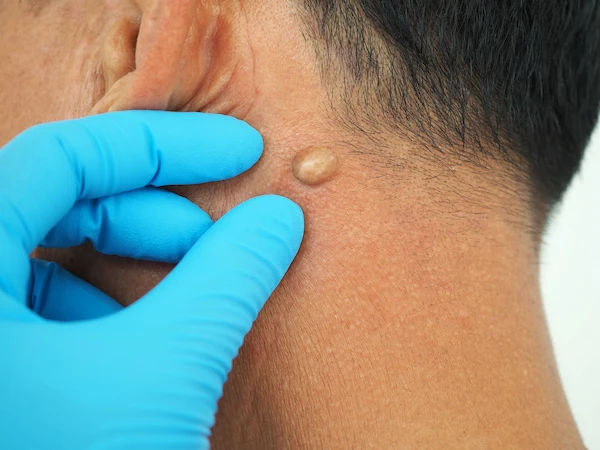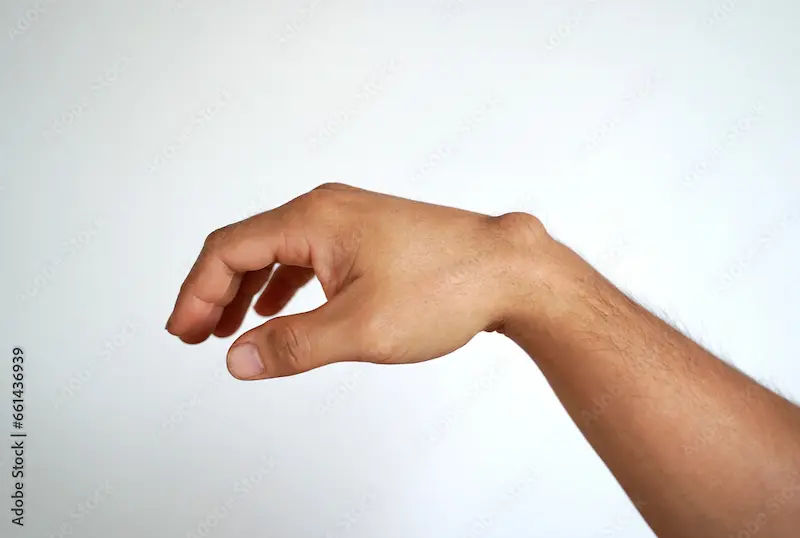Understanding Lipomas: Causes, Symptoms, And Treatment Options
Learn about lipomas, their causes, symptoms, and treatment options. Lipomas are benign fatty lumps that develop under the skin. Find out what increases the risk, how they present, and the available treatment options.

Written by Dr. Sonia Bhatt
Last updated on 3rd Jul, 2025

Introduction
A lipoma is a benign (non-cancerous) growth of fatty tissue that develops just below the skin. While typically harmless, lipomas can sometimes cause discomfort, especially if they grow large or are located in a sensitive area. Understanding the causes, symptoms, and treatment options for lipomas can help you make informed decisions about managing this common condition. In this comprehensive guide, we will explore everything you need to know about lipomas and the various treatments available.
What is a Lipoma?
A lipoma is a soft, rubbery lump composed of fat cells that slowly accumulates just beneath the skin. These growths are usually round or oval, and they can vary in size from as small as a pea to several centimeters in diameter. Lipomas are most commonly found on the neck, shoulders, back, abdomen, arms, and thighs, but they can develop anywhere on the body.
Causes of Lipomas
The exact cause of lipomas is not well understood, but several factors may contribute to their development, including:
Genetic Predisposition: Genetics play a significant role in the development of lipomas. If you have a family history of lipomas, you are more likely to develop them yourself. This genetic link suggests that there may be inherited factors that predispose individuals to lipoma formation.
Age: Lipomas are more commonly diagnosed in middle-aged adults, typically between the ages of 40 and 60. While they can occur at any age, they are less common in children and adolescents.
Certain Medical Conditions: Some medical conditions are associated with an increased risk of developing lipomas. For example:
Adiposis Dolorosa (Dercum's Disease): A rare condition characterized by multiple painful lipomas.
Gardner Syndrome: A genetic disorder that causes multiple benign growths, including lipomas.
Madelung's Disease: A condition that leads to the abnormal accumulation of fat deposits, often resulting in multiple lipomas.
Injury or Trauma: Lipomas can sometimes form at the site of a previous injury or trauma. It is believed that the trauma may trigger the proliferation of fat cells, leading to the development of a lipoma.
Hormonal Factors: Hormonal changes and imbalances may play a role in the formation of lipomas. Some studies suggest that certain hormones involved in fat metabolism may influence lipoma growth.
Metabolic Factors: Abnormalities in fat metabolism and storage may contribute to the development of lipomas. Conditions that affect fat metabolism, such as obesity and diabetes, may be linked to an increased risk of lipomas.
Symptoms of Lipomas
Lipomas are generally easy to recognize due to their characteristic appearance and feel. Here are the key symptoms to look out for:
Soft, Rubbery Lump: A lipoma typically feels soft and rubbery to the touch. Unlike more solid lumps, lipomas can be easily pressed down and will usually bounce back into shape.
Movable Under the Skin: One of the defining features of a lipoma is that it moves easily under the skin when gentle pressure is applied. This mobility distinguishes lipomas from other types of lumps that may be more firmly attached to the underlying tissues.
Slow-Growing: Lipomas tend to grow very slowly over time. They can start as a small pea-sized lump and gradually increase in size over several months or years. However, the growth rate can vary from person to person.
Painless: Most lipomas are painless and do not cause discomfort. However, if a lipoma presses against nerves or other structures, it can become painful or tender. Pain is more common if the lipoma is located in an area subject to frequent pressure or friction.
Size and Shape: Lipomas are generally round or oval-shaped and can vary in size. They can be as small as a pea or grow to several centimeters in diameter. In some cases, lipomas can grow large enough to be noticeable under clothing or cause a visible bulge.
Location: Lipomas can develop anywhere on the body, but they are most commonly found on the neck, shoulders, back, abdomen, arms, and thighs. They can occur as a single lump or multiple lumps scattered across different areas.
Diagnosing Lipomas
If you notice a lump under your skin, it's important to have it evaluated by a healthcare professional to rule out other conditions. Diagnosing a lipoma typically involves:
Physical Examination: Your doctor will examine the lump to assess its size, texture, and mobility.
Imaging Tests: In some cases, imaging tests such as ultrasound, MRI, or CT scans may be used to get a better look at the lump and confirm that it is a lipoma.
Biopsy: If there is any doubt about the nature of the lump, your doctor may perform a biopsy, where a small sample of the tissue is removed and examined under a microscope.
Treatment Options for Lipomas
While lipomas are generally harmless, treatment may be recommended if they cause discomfort, restrict movement, or are cosmetically concerning. Treatment options for lipomas include:
Observation
In many cases, no immediate treatment is needed, and your doctor may recommend simply monitoring the lipoma for any changes in size or symptoms. Regular check-ups can help ensure that the lipoma remains benign and does not cause any problems.
Surgical Removal
Surgical removal is the most common treatment for lipomas, especially if they are causing pain, growing in size, or affecting your quality of life. The procedure, known as excision, involves making a small incision over the lipoma and carefully removing the fatty tissue. This can usually be done on an outpatient basis under local anesthesia. Recovery time is typically short, and complications are rare.
Liposuction
For larger lipomas, liposuction may be an option. This procedure involves using a thin, hollow tube called a cannula to suction out the fatty tissue. Liposuction is less invasive than traditional surgery and may result in a quicker recovery time. However, there is a higher chance that the lipoma may recur with this method compared to surgical excision.
Steroid Injections
In some cases, steroid injections can be used to shrink the size of the lipoma. The steroids help reduce inflammation and decrease the size of the fatty lump. While this method is less invasive than surgery, it may not be as effective in completely removing the lipoma.
Laser Lipolysis
Laser lipolysis is a minimally invasive procedure that uses laser energy to break down the fatty tissue in the lipoma. The laser energy liquefies the fat, which can then be suctioned out or naturally absorbed by the body. This method is less invasive than traditional surgery and may result in less scarring and a quicker recovery time.
When to See a Doctor
While most lipomas are harmless and do not require treatment, there are certain situations where you should seek medical advice:
Pain or Discomfort: If the lipoma is causing pain or discomfort, it's important to have it evaluated by a healthcare professional.
Rapid Growth: If the lipoma is growing quickly or changing in appearance, it should be assessed by a doctor to rule out other conditions.
Location: If the lipoma is located in an area that affects your movement or daily activities, it may need to be removed.
Cosmetic Concerns: If the lipoma is affecting your appearance and causing emotional distress, you may wish to discuss removal options with your doctor.
Conclusion
Lipomas are common, benign growths that usually do not pose a serious health risk. However, if a lipoma becomes bothersome, painful, or grows larger, there are several treatment options available, including surgical removal, liposuction, steroid injections, and laser lipolysis. It's important to consult with a healthcare professional to determine the best course of action for your specific situation. By staying informed and seeking appropriate medical care, you can effectively manage lipomas and maintain your overall well-being.
Consult Top Dermatologists
Consult Top Dermatologists

Dr. S Madhuri
Dermatologist
10 Years • MBBS, MD. DVL, DNB, Fellow (Dermatosurgery & Lasers)
Secunderabad
Apollo Hospitals Secunderabad, Secunderabad
(325+ Patients)

Dr Madhu R
Dermatologist
5 Years • MBBS MD -Dermatology
Bengaluru
Apollo Medical Center, Marathahalli, Bengaluru

Dr. Kriti Bhat
Dermatologist
5 Years • MBBS, MD ( Dermatology, Venerology, Leprosy ) from AIIMS JODHPUR
Bengaluru
Apollo Medical Center, Marathahalli, Bengaluru
Dr.j Girishma
Dermatologist
6 Years • MBBS MD DERMATOLOGY
Bengaluru
Apollo Medical Center, Marathahalli, Bengaluru

Dr. Shwetha H P
Dermatologist
11 Years • M.B.B.S ,D.V.D ,FAM (Fellowship in Aesthetic Medicine)
Bengaluru
Apollo Clinic, Sarjapur Road, Bengaluru
(25+ Patients)

